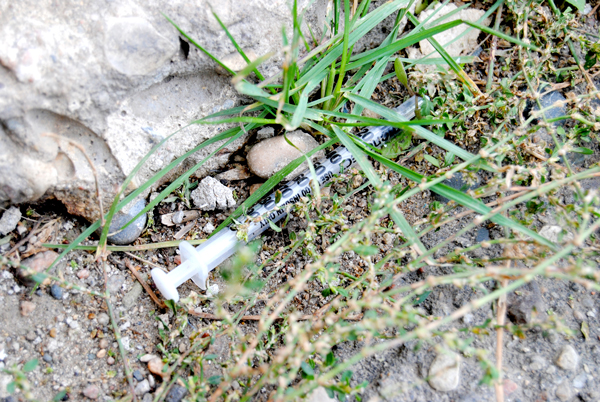Saskatchewan is on pace for a record number of drug overdose deaths, recent data from the Saskatchewan Coroner’s Service shows.
The data was released quietly without a press release, and identified by StarPhoenix reporter Zak Vescera.
A document posted to the coroner’s service website, last updated Aug. 6, details confirmed and suspected drug overdose deaths.
Reporting suspected overdose deaths is new for the service, which historically only published data about confirmed drug overdose deaths.
There have been 40 confirmed drug overdose deaths this year, with another 139 suspected. That brings this year’s total to 179. The previous record for drug overdose deaths in Saskatchewan was set in 2018, when 171 people died by drug overdose. Of those 171 deaths in 2018, 138 were accidents, while 27 were suicides and six were undetermined. So far this year, of the 40 confirmed cases, 39 are accidents and one is undetermined.
Of this year’s 40 confirmed overdose deaths, fentanyl and its derivatives, including carfentanyl, acetyl fentanyl and furanyl fentanyl, account for 30. The second most common drug found in overdose deaths is hydromorphone.
None of the confirmed overdose deaths involving fentanyl occurred in Prince Albert this year. Almost all have been in Regina, with two single cases of fentanyl and carfentanyl detected in Gordon’s First Nation near Punicchy, about 100 km northeast of Regina Prince Albert last saw a fentanyl death in 2018, with another single case detected in 2015.
Race and age data show that Indigenous people make up more than half of all confirmed overdose deaths so far this year, where investigations have been completed and information is available. More men have died by overdose than women.
Women who have died by overdose this year have been, on average, younger, with all but four of the accidental overdose deaths occurring in women under the age of 40, including two who were teenagers.
By contrast, only three men under the age of 40 died by overdose, with the rest of the deaths coming between the ages of 40 and 70. While only two of this year’s confirmed overdose deaths were from methamphetamine alone, meth was present in 15 more confirmed cases, the data showed. That means that of the 40 confirmed overdose deaths, almost half involved methamphetamine use. Last year, of the 158 confirmed overdose deaths, only 40 involved methamphetamine use. Detailed information wasn’t available for the other 139 suspected overdose deaths, as those investigations are ongoing.
However, the high number of suspected overdose deaths is alarming, especially with five more months of data to come. The Ministry of Corrections and Policing says a suspected overdose death is a situation in which evidence at the scene, the circumstances and the history of the person point toward a fatal overdose, but a post-mortem examination — like an autopsy — has not been done.
Health Minister Jim Reiter said the numbers are concerning.
“Obviously the trend line is going in the wrong direction.”
Prairie Harm Reduction executive director Jason Mercredi had stronger words.
“It’s pathetic. Just flat out, it’s pathetic, when we’re looking at how many people are dying and how the health authority has been almost silent on this issue,” he told Vescera.
Spikes in overdoses in Saskatchewan are often flagged by local organizations — non-profits, ambulance services or police.
Parkland Ambulance, for instance, recorded over double the number of overdose calls in the Prince Albert area in the last two weeks of July. For the week of July 20, paramedics responded to nine calls for overdoses. The next week, starting July 27, they responded to 20.
Director of Public Affairs Lyle Karasiuk couldn’t say how much of the increase was related to drugs or alcohol, for example. Overdoses are a large category for Parkland, consisting of intentional or accidental consumption ranging from street drugs, to alcohol, to poisoning in babies.
He also couldn’t speculate the reason behind the spike. They typically see overdose increases when a certain substance is moving through the city, but based on conversations with law enforcement, that likely wasn’t what’s happening.
The service also saw an uptick in overdose calls earlier in the year, with Karasiuk saying that the city had a slight, but steady, increase in reported overdoses.
Saskatoon Medical Health Officer Dr. Johnmark Opondo confirmed in a statement that “The SHA at present does not have a systematic surveillance system for reporting deaths by overdose.”
That’s because tracking is complex and the data flows to various organizations, like the coroner and ambulance services, he wrote.
“Overdose surveillance is routine, ongoing, and systematic, with checks and balances built-in for validation of information (which takes time).”
Asked if the numbers would prompt new action, Reiter highlighted the $33 million overall increase in mental health and addictions spending in the latest provincial budget, including funds for specialized methamphetamine treatment beds in Estevan. He said those programs will take time to implement.
The Saskatchewan Coroners Service has previously only reported “confirmed” overdose deaths.
Integrated Justice Services communications director Marieka Andrew said the step of reporting suspected deaths, which started this month, aligns Saskatchewan with practices in other provinces.
In June, Postmedia asked why that was not already being done. Andrew responded then that “The Service only reports on confirmed cases that are closed through investigation so there is no speculation on their numbers.”
–With Daily Herald files from Jayda Taylor and StarPhoenix files from Zak Vescera


